- Clone
- 1C2 (See other available formats)
- Regulatory Status
- RUO
- Other Names
- Platelet glycoprotein V, GPV, platelet gpV, CD42d antigen, CD42d
- Isotype
- Armenian Hamster IgG
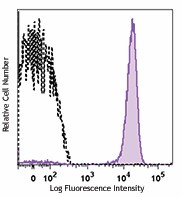
-

C57BL/6 platelets (resting) were stained with CD42d (clone 1C2) PE (filled histogram) or Armenian Hamster IgG PE istoype control (open histogram).
| Cat # | Size | Price | Quantity Check Availability | ||
|---|---|---|---|---|---|
| 148503 | 25 µg | $117.00 | |||
| 148504 | 100 µg | $214.00 | |||
CD42d is an 83 kD surface glycoprotein that non-covalently associates with GPIb and GPIX to form a receptor complex for von Willebrand factor on megakaryocytes and resting platelets. Binding sites for von Willebrand factor and thrombin have been localized to the GPIba chain of the GPI-b-V-IX complex. Platelet activation with thrombin cleaves the GPI-b-V-IX complex to release a 69 kD soluble fragment. Presence of the GPI-b-V-IX complex is important in Bernard-Soulier syndrome, a rare bleeding disorder.
Product Details
- Verified Reactivity
- Mouse, Rat
- Antibody Type
- Monoclonal
- Host Species
- Armenian Hamster
- Immunogen
- Mouse platelets
- Formulation
- Phosphate-buffered solution, pH 7.2, containing 0.09% sodium azide.
- Preparation
- The antibody was purified by affinity chromatography and conjugated with PE under optimal conditions.
- Storage & Handling
- The antibody solution should be stored undiluted between 2°C and 8°C, and protected from prolonged exposure to light. Do not freeze.
- Application
-
FC - Quality tested
- Recommended Usage
-
Each lot of this antibody is quality control tested by immunofluorescent staining with flow cytometric analysis. For flow cytometric staining, the suggested use of this reagent is ≤0.5 µg per million cells in 100 µl volume. It is recommended that the reagent be titrated for optimal performance for each application.
- Excitation Laser
-
Blue Laser (488 nm)
Green Laser (532 nm)/Yellow-Green Laser (561 nm)
- Application Notes
-
Additional reported applications (for relevant formats) include: immunoprecipitation1,3.
-
Application References
(PubMed link indicates BioLegend citation) -
- Takada K, et al. 1995. Hybridoma. 14:361. (IP)
- Saito M, et al. 1996. Stem Cells. 14:124. (FC)
- Sato N, et al. 2000. Hybridoma. 19:455. (IP)
- Product Citations
-
- RRID
-
AB_2564292 (BioLegend Cat. No. 148503)
AB_2564292 (BioLegend Cat. No. 148504)
Antigen Details
- Structure
- 83 kD heterodimer composed of 2 polypeptide chains, an α chain (GP1BA) and a β chain (GP1BB).
- Distribution
- Resting platelets and megakaryocytes.
- Function
- CD42d is a component of the GPIb-V-IX complex, functions as a vWF receptor, and mediates vWF-dependent platelet adhesion to blood vessels.
- Ligand/Receptor
- CD42d.
- Cell Type
- Platelets, Megakaryocytes
- Biology Area
- Cell Adhesion, Cell Biology, Immunology
- Molecular Family
- Adhesion Molecules, CD Molecules
- Antigen References
-
1. Sivaraman B, et al. 2011. Biomaterials. 32:5365.
2. Berger G, et al. 1996. Blood. 87:1385.
3. Ravanat C, et al. 1997. Blood. 89:3253.
4. Andrews RK, et al. 1998. Biochemistry. 37:638.
5. Inoue O, et al. 2008. 283:16279.
6. Hickey MJ, et al. 1993. Proc. Natl. Acad. Sci. 90:8327.
7. Shimomura T, et al. 1990. Blood. 75:2349.
8. Wu G, et al. 1997. Blood. 90:2660. - Gene ID
- 14729 View all products for this Gene ID
- UniProt
- View information about CD42d on UniProt.org
Other Formats
View All CD42d Reagents Request Custom Conjugation| Description | Clone | Applications |
|---|---|---|
| Purified anti-mouse/rat CD42d | 1C2 | FC,IP |
| PE anti-mouse/rat CD42d | 1C2 | FC |
| APC anti-mouse/rat CD42d | 1C2 | FC |
| PerCP/Cyanine5.5 anti-mouse/rat CD42d | 1C2 | FC |
Compare Data Across All Formats
This data display is provided for general comparisons between formats.
Your actual data may vary due to variations in samples, target cells, instruments and their settings, staining conditions, and other factors.
If you need assistance with selecting the best format contact our expert technical support team.
-
Purified anti-mouse/rat CD42d
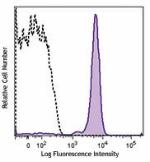
C57BL/6 platelets were stained with purified 1C2 (clone 1C2,... -
PE anti-mouse/rat CD42d
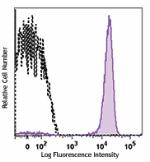
C57BL/6 platelets (resting) were stained with CD42d (clone 1... -
APC anti-mouse/rat CD42d
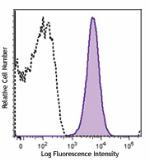
C57BL/6 platelets (resting) were stained with CD42d (clone 1... -
PerCP/Cyanine5.5 anti-mouse/rat CD42d
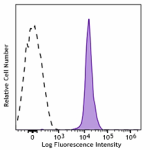
C57BL/6 platelets (resting) were stained with CD42d (clone 1...
